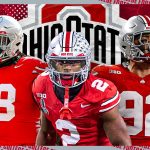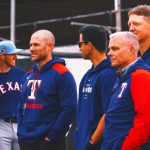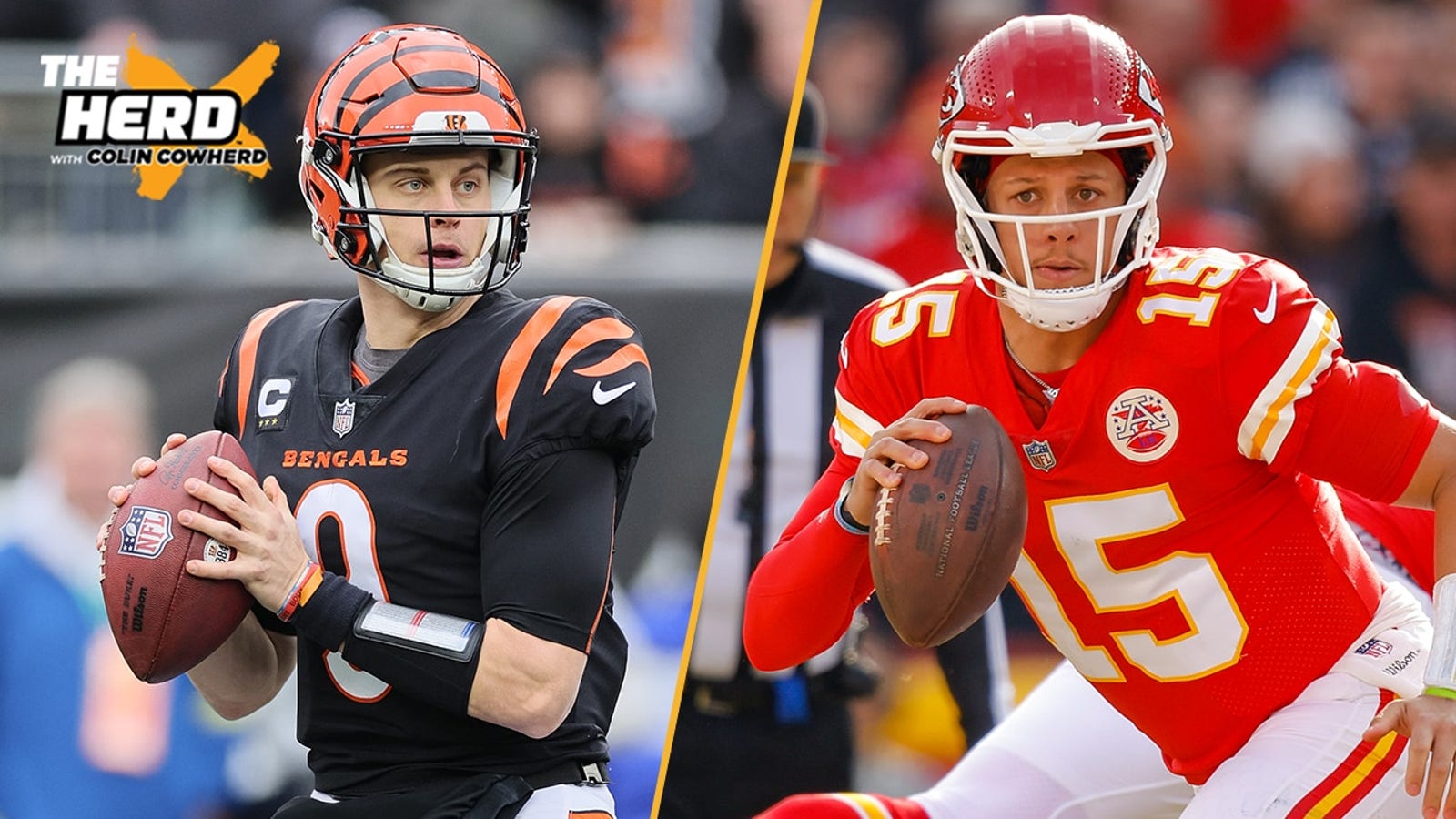When Brandon Staley moved on from offensive coordinator Joe Lombardi and hired Kellen Moore this offseason, the Los Angeles Chargers‘ defensive-minded head coach viewed it as a chance to align himself more closely with the conductor of his offense.
Staley has been an admirer of the former Dallas Cowboys OC for years. After all, Dallas’ explosive offense gave Staley fits when he served as defensive coordinator for the Los Angeles Rams.
What does Staley like most about Moore? His adaptability when players go down due to injury, including when the Cowboys went 4-1 with backup quarterback Cooper Rush last year.
“When I first became a defensive coordinator, they had a right tackle issue,” Staley told FOX Sports at the NFL owners meetings earlier this year. “Terence Steele was starting, and they were kind of hurt on the O-line, and I saw [Moore] really navigate that process. Onboarding a rookie receiver in CeeDee Lamb and seeing what he did with those three receivers in [Michael] Gallup, [Amari] Cooper and CeeDee, along with the two tight ends in [Dalton] Schultz and [Blake] Jarwin. And then the work he did with Zeke [Ezekiel Elliott] and [Tony] Pollard. I just thought that was as tough a cover as I had to go against in the NFL.
“And then to see him morph through the years. … A sign of a good coach is being able to figure it out. He’s dealing with injuries at receiver. They played five games with a backup quarterback, and they went 4-1. And they were a drive away from going to the NFC Championship Game, so I just think this guy has proven production. How he leads, how he teaches, we see things very similar that way. I think the way he creates is exciting for me.”
Innovation and creativity have always been at the core of Moore as a football player. He grew up around the game, carrying a notepad to design plays as a ball boy. Moore is the son of legendary high school football coach Tom Moore, who won four state titles in 23 seasons at Prosser High in a small town nestled along the Yakima River east of the Cascades in Washington state.
Those Prosser teams were known for their no-huddle offense and playing fast, using spread concepts to create big plays against more talented teams from bigger schools in the Seattle area.
ADVERTISEMENT
Kellen Moore took that ethos with him to Boise State, where he finished 50-3 as a starting quarterback and helped the Broncos slay college football giants like Georgia and Oregon.
“I thought my dad did a really good job of having a clear vision,” Kellen Moore told FOX Sports. “I thought that was always the thing about Prosser Mustang football — everyone kind of always on the same page. He always did a real good job of making the game clean and simple, while still being creative and fun. That’s always a balancing act for all of us.”
Chiefs, Bengals, Chargers, Bills highlight Colin’s top 10 AFC teams
Colin Cowherd shares his top 10 AFC teams, featuring the Chiefs, Bengals, Chargers and Bills.
After four seasons as OC for the Cowboys, Moore is now tasked with creating a clear vision and foundation for a Los Angeles offense that became stagnant despite having one of the league’s best young QBs in Justin Herbert.
The Cowboys averaged 391 yards and 27.7 points a contest during Moore’s time as the team’s offensive coordinator and playcaller, No. 2 in the NFL during that time.
More importantly to the Chargers, the Cowboys ranked No. 7 in rushing (126.6 yards per game) during that span. Running the ball effectively has been a struggle for the Bolts — one of the reasons they failed to hold onto a 27-0 lead in the AFC wild-card round in a stunning road loss to the Jacksonville Jaguars.
The Chargers averaged just 89.6 rushing yards a game last season, No. 30 in the league.
Both haling from the Pacific Northwest, Moore and Herbert already have a connection, working together in a TV commercial for an auto group along with Cowboys linebacker Leighton Vander Esch.
“The commercial aspect, it’s been kind of funny, just the way it all happened in less than 12 months,” Moore said. “We spent some time doing some commercials and having some fun, and then lo and behold connecting here after the season.
“He’s been awesome to work with. It’s been a really fun transition, just getting to know him personally. And then just trying to build this thing together offensively.”
Moore played the 2014 season as a backup QB with the Detroit Lions under the direction of Lombardi as the offensive coordinator, so he’s familiar with L.A.’s offense and will keep concepts that were successful for Herbert in the past.
“With Justin, any time you have a quarterback that’s played at a really high level, certain routes that he may like that we didn’t run in Dallas, or I have not run — something he may be more comfortable with — let’s continue to make sure we emphasize it,” Moore said. “For example, Keenan [Allen] and Justin have a great feel for each other on some of these choice routes, so how do you build off that? Gerald [Everett] ran some of them. Austin [Ekeler] ran some of them. And that’s just one example of ‘Let’s not lose this.'”
Herbert is learning his sixth different offense in eight seasons, dating back to his time in college at Oregon, so creating a smooth transition is critical for Moore.
Another area of focus for the Chargers is being explosive in three-receiver sets. The Bolts added another weapon in TCU product Quentin Johnston in the first round of this year’s draft. At 6-foot-3 and 210 pounds and with 4.5-second speed in the 40-yard dash, Johnston is a big-bodied receiver who adds a vertical threat while also providing an ability to create plays with his feet on underneath routes.
According to Next Gen Stats, the 2022 Chargers ran 67.7% of their plays out of three-receiver sets. Only the Tampa Bay Buccaneers (70.5%) ran more plays out of that personnel grouping last year.
“We really liked the vertical element,” Moore said about Johnston. “He did a great job down the field running by people, but more importantly attacking the football, going up and making plays in contested situations. I thought he did a tremendous job there.
“And then I think what really stood out was for his size and frame and what you traditionally expect from that, you saw all these shallow crosses, catch-and-run opportunities, the fly sweeps and bubbles. All this space player stuff that traditionally fits into the slot-receiver mold. And then you see him doing it. We just got really excited when you saw all those pieces connected.”
Although he’s a defensive coach, Staley played quarterback in college and, like Moore, sees the game through the QB-playcaller lens. That commonality helped bring the two together philosophically as the Chargers attempt to build an offense that can take advantage of Herbert’s unique skill set and lead the team on a deep postseason run.
“It’s the way he teaches, the way he leads,” Staley said about Moore. “Philosophically, you’re just kind of aligned with certain people. The way that he sees the game, and the way he can communicate to coaches and players to truly build an offense, I’ve been such a fan of his for a long time.”
Eric D. Williams has reported on the NFL for more than a decade, covering the Los Angeles Rams for Sports Illustrated, the Los Angeles Chargers for ESPN and the Seattle Seahawks for the Tacoma News Tribune. Follow him on Twitter at @eric_d_williams.
NFL trending

Get more from National Football League Follow your favorites to get information about games, news and more











